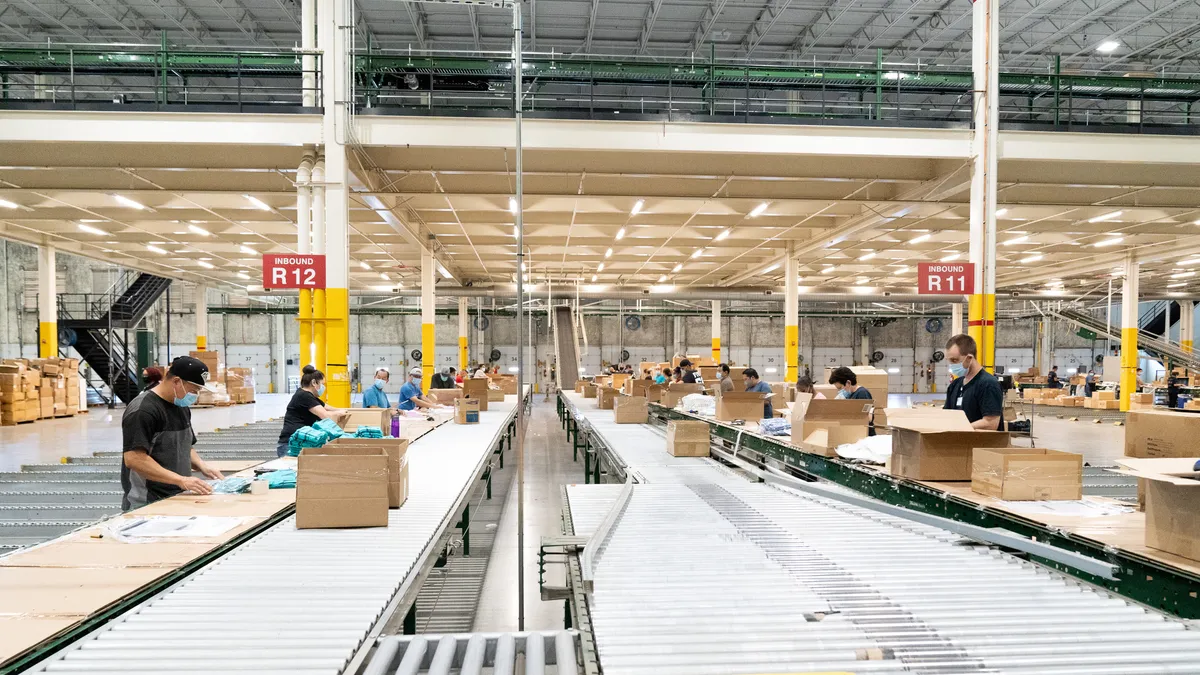Dive Brief:
- Gap has launched logistics and fulfillment services for retailers, joining a growing number of companies leveraging their supply chains as revenue generators.
- GPS Platform Services provides omnichannel fulfillment capabilities through a nationwide distribution network, according to Gap's website.
- In addition, GPS offers reverse logistics services, including returns initiation, shipping labels and processing at its fulfillment centers. The company did not respond to a request for comment on when GPS officially launched.
Dive Insight:
Large companies with established distribution muscle are getting into the supply chain business as a means to land new commercial customers.
American Eagle's logistics arm Quiet Platforms launched a delivery network earlier this month. The move comes as its parent company buys warehouse capacity and secures shipping deals to attract more clients.
Walmart has surpassed 1 million deliveries on its white-label delivery service, GoLocal, as it nears its one-year launch anniversary. Produce giant Fresh Del Monte is growing its own logistics capabilities as it looks to become an end-to-end supply chain provider.
"Given the earnings pressures announced by [Target] and [Walmart] this week, it’s becoming increasingly clear that legacy companies need to find ways to innovate by turning cost centers into potential profit centers," wrote Jim Kennedy, founder of the American Eagle-acquired delivery startup AirTerra, on Twitter in response to GPS Platform Services' launch.
Now, Gap is opening the doors of its own distribution network to outside companies.
"For the first time, we are making Gap Inc.’s fast, flexible, and highly automated logistics and fulfillment network available to brands of all sizes through GPS Platform Services," Kevin Kuntz, head of supply chain at Gap, wrote in a LinkedIn post Wednesday.
GPS’s offerings include: next-day and two-day shipping, short-term storage and cross-docking via its warehousing and a self-service portal with Application Programming Interface (API) integrations to major commerce platforms including Amazon and Shopify.
The distribution network features 13 distribution centers in North America capable of processing 1 billion units per year, per Gap's website. Gap owned five North American distribution centers and leased three more as of Jan. 29, according to its 10-K. The retailer has since opened a Longview, Texas, distribution center equipped with robotics and automation, and it plans to open an Ontario, Canada, distribution center in fiscal year 2024.
Gap’s supply chain investments extend beyond new warehouses — CFO Katrina O’Connell said on a March earnings call that the company is planning for full-year capital expenditure investments of $700 million. That spending will focus on supply chain and technology projects targeting improved automation, speed and efficiency in its fulfillment network.














